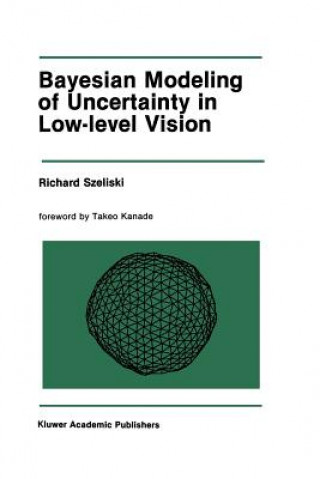
Kézbesítés
Vásárlási tanácsadó





Nem vált be? Semmi gond! Nálunk 30 napon belül visszaküldheti
 Ajándékutalvány
bármilyen értékben
Ajándékutalvány
bármilyen értékben
Ajándékutalvánnyal nem nyúlhat mellé. A megajándékozott az ajándékutalványért bármit választhat kínálatunkból.
Bayesian Modeling of Uncertainty in Low-Level Vision
 Angol
Angol
 331 b
331 b
30 nap a termék visszaküldésére
Ezt is ajánljuk


Vision has to deal with uncertainty. The sensors are noisy, the prior knowledge is uncertain or inaccurate, and the problems of recovering scene information from images are often ill-posed or underconstrained. This research monograph, which is based on Richard Szeliski's Ph.D. dissertation at Carnegie Mellon University, presents a Bayesian model for representing and processing uncertainty in low level vision. Recently, probabilistic models have been proposed and used in vision. Sze liski's method has a few distinguishing features that make this monograph im portant and attractive. First, he presents a systematic Bayesian probabilistic estimation framework in which we can define and compute the prior model, the sensor model, and the posterior model. Second, his method represents and computes explicitly not only the best estimates but also the level of uncertainty of those estimates using second order statistics, i.e., the variance and covariance. Third, the algorithms developed are computationally tractable for dense fields, such as depth maps constructed from stereo or range finder data, rather than just sparse data sets. Finally, Szeliski demonstrates successful applications of the method to several real world problems, including the generation of fractal surfaces, motion estimation without correspondence using sparse range data, and incremental depth from motion.
Információ a könyvről
 Angol
Angol
Kategória




 Hogyan vásároljunk
Hogyan vásároljunk
























